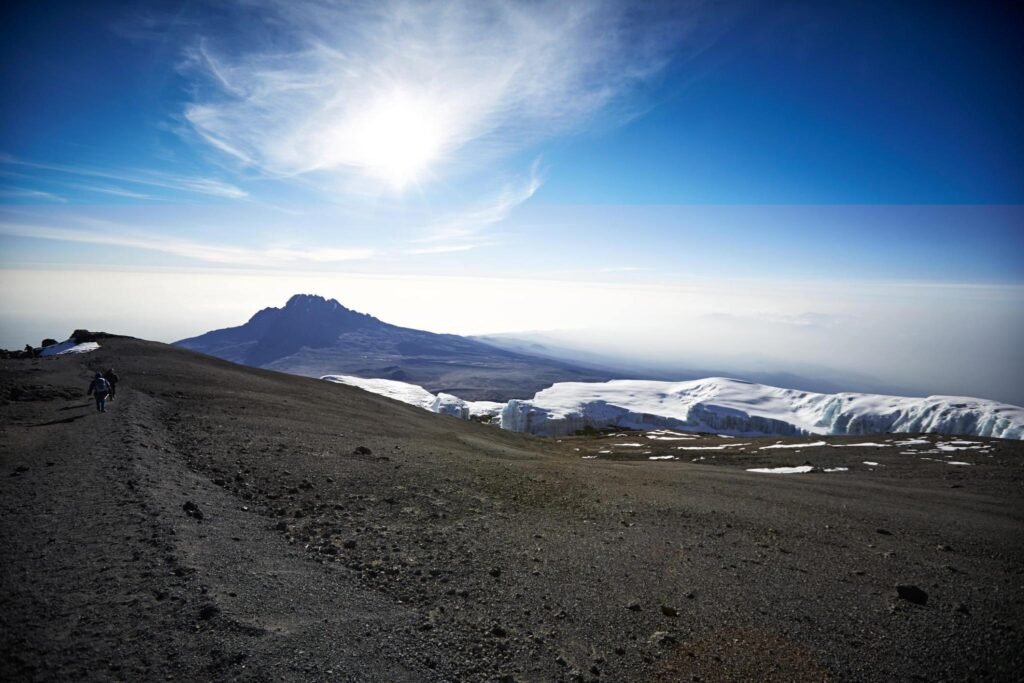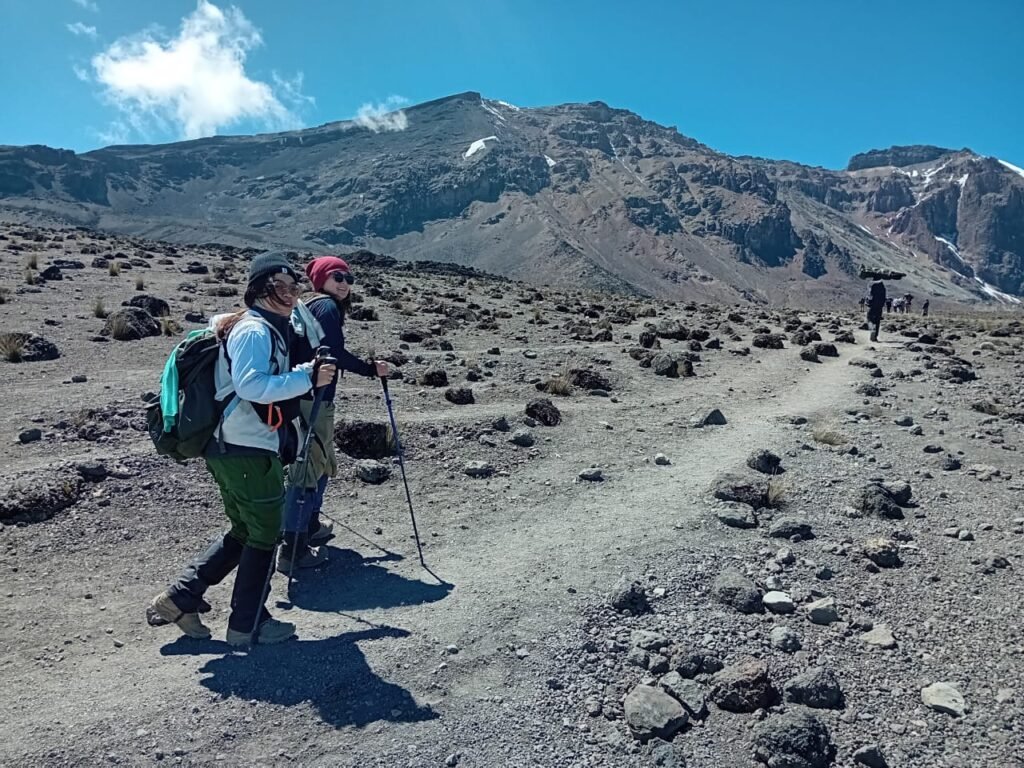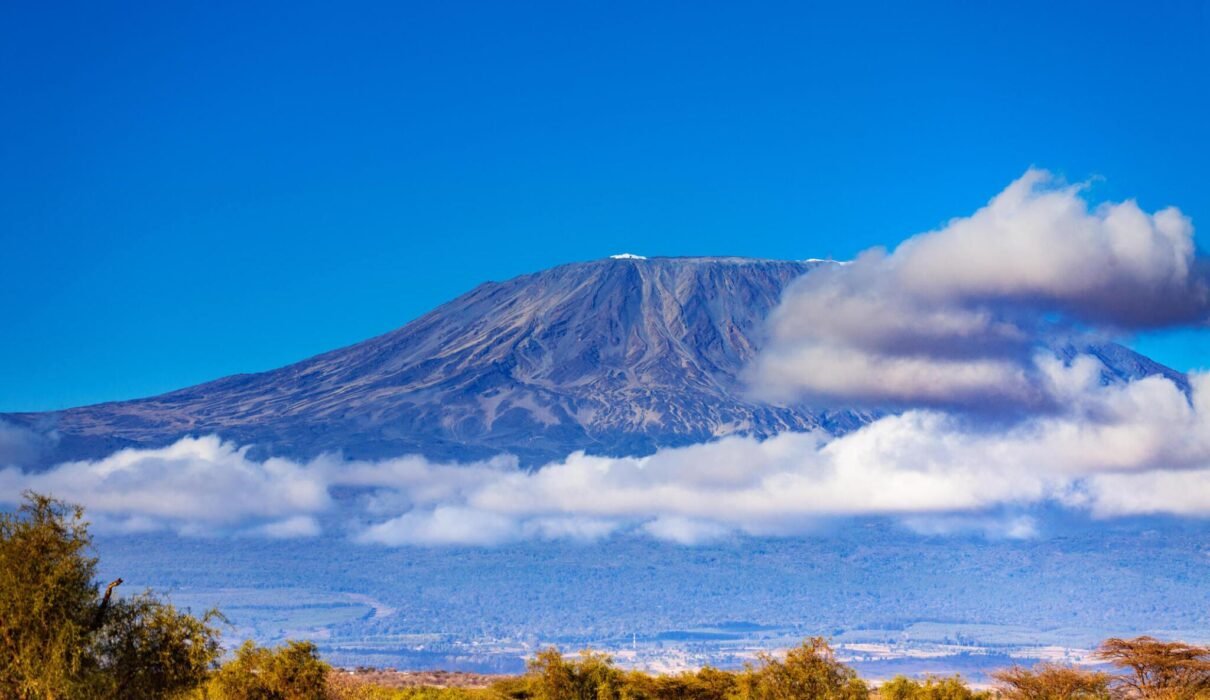Mount Kilimanjaro Amazing Range of Climates : Mount Kilimanjaro is not only the tallest mountain in Africa, but it also offers one of the most unique trekking experiences. As climbers ascend its majestic slopes, they pass through a remarkable range of climate zones, from warm tropical rainforests to arctic tundra at the summit. This dramatic variation in climate makes Kilimanjaro one of the most fascinating mountains in the world.
In this guide, we’ll take a closer look at the different climate zones of Mount Kilimanjaro, how they affect your trek, and what you need to prepare for each environment.
For more detailed information on climbing Kilimanjaro and its various routes, check Kilimanjaro Climb Specialist.

Mount Kilimanjaro Amazing Range of Climates : Understanding Kilimanjaro’s Climate Zones
Mount Kilimanjaro’s immense height of 5,895 meters (19,341 feet) means that climbers experience a shift in climate every few thousand meters. There are five distinct zones on Kilimanjaro, each with unique weather conditions, landscapes, and wildlife. Preparing for these climatic variations is crucial for a successful climb.
Learn more about Kilimanjaro’s climate and geography here.
Mount Kilimanjaro Amazing Range of Climates : The Cultivation Zone (800m – 1,800m)
This is the lowest zone of Kilimanjaro, where the climate is warm and tropical. This area is characterized by cultivated land where locals grow bananas, coffee, and other crops. The weather is generally mild, with occasional rain showers.
- Average Temperature: 25°C to 30°C (77°F to 86°F)
- Vegetation: Tropical crops, farms, and small villages.
Discover more about Kilimanjaro’s agricultural land.
Mount Kilimanjaro Amazing Range of Climates : The Rainforest Zone (1,800m – 2,800m)
As you ascend into the rainforest zone, the temperature cools down, and the environment becomes more humid. This zone is one of the most vibrant and lush areas on Kilimanjaro, home to a variety of flora and fauna, including monkeys and exotic birds. Rain is frequent, especially during the wet season.
- Average Temperature: 15°C to 20°C (59°F to 68°F)
- Vegetation: Dense rainforest with towering trees and vines.
- Wildlife: Blue monkeys, colobus monkeys, and numerous bird species.
To know more about the diverse wildlife in this region, click here.
Mount Kilimanjaro Amazing Range of Climates : The Heath/Moorland Zone (2,800m – 4,000m)
As you leave the rainforest behind, the landscape changes drastically into heath and moorland. This area features low shrubs, hardy grasses, and giant heathers, creating a striking and alien-like landscape. The temperature continues to drop, and the air becomes noticeably drier.
- Average Temperature: 5°C to 15°C (41°F to 59°F) during the day; below freezing at night.
- Vegetation: Giant groundsels and lobelias, which have adapted to the harsh conditions.
For a deeper dive into Kilimanjaro’s unique plant life, read more here.
The Alpine Desert Zone (4,000m – 5,000m)
In the alpine desert zone, the air becomes thin, and the temperature swings dramatically between day and night. During the day, it can be quite warm, while nighttime temperatures drop below freezing. This zone is characterized by rocky, barren terrain with little vegetation, and the stark environment challenges trekkers both physically and mentally.
- Average Temperature: Daytime highs around 25°C (77°F), but freezing at night.
- Vegetation: Sparse plant life, including a few hardy grasses and lichens.
Explore more about surviving in extreme alpine environments.
The Arctic Zone (5,000m – 5,895m)
At Kilimanjaro’s summit, climbers enter the arctic zone. The landscape here is dominated by glaciers, snowfields, and rocky ground. Temperatures are below freezing even during the day, and the oxygen level is much lower. This is the final challenge before reaching the peak, and it’s the coldest and most demanding part of the climb.
- Average Temperature: -7°C to -20°C (19°F to -4°F)
- Vegetation: None; this zone is icy, barren, and extremely cold.
- Oxygen Levels: Roughly 50% of that at sea level.
Learn about the effects of high-altitude climates on climbers.
Mount Kilimanjaro Amazing Range of Climates : How Weather Affects Climbing on Kilimanjaro
Kilimanjaro’s weather can change quickly, and understanding the climate in each zone is essential to ensuring a safe and enjoyable trek. Here are a few tips on how to deal with the varying weather conditions:
- Layered Clothing: Prepare with a combination of moisture-wicking base layers, warm insulating layers, and waterproof outer layers. You will need to add or remove layers as the climate changes.
- Proper Footwear: A good pair of waterproof hiking boots is crucial, especially in the rainforest and alpine desert zones where conditions can become wet or muddy.
- Acclimatization: Due to the rapid altitude changes, altitude sickness is a concern. Proper acclimatization is vital to reduce the risk of acute mountain sickness (AMS).
For more tips on climbing safely in different weather conditions, read this guide.
Mount Kilimanjaro Amazing Range of Climates : Best Time to Climb Kilimanjaro Based on Weather
The weather on Kilimanjaro is divided into two main climbing seasons: the dry season and the rainy season. While it’s possible to climb during the rainy season, most trekkers prefer the dry season for better visibility and more manageable trail conditions.
- Dry Season: June to October and January to February. The weather is more stable with clear skies, making it the most popular time to climb. However, expect more crowded trails.
- Rainy Season: March to May and November to December. Fewer people climb during the wet season due to muddy trails and reduced visibility. However, it’s quieter and the landscapes are lush and green.
For more details on when to plan your Kilimanjaro climb, check out this helpful article.
Mount Kilimanjaro Amazing Range of Climates : Preparing for Kilimanjaro’s Varied Climates
Due to Kilimanjaro’s vast range of climates, it’s essential to be prepared for anything. Here are some items you should pack for each climate zone:
- Rainforest Zone: Waterproof jackets, gaiters, and quick-dry clothing are essential.
- Moorland and Alpine Desert Zones: Insulating layers for warmth, including fleece jackets and thermal gloves.
- Arctic Zone: Down jacket, thermal sleeping bag, and high-quality gloves to protect against extreme cold.
For a full packing list tailored to Kilimanjaro’s climates, read this checklist.
How Climate Change is Impacting Kilimanjaro’s Weather
Mount Kilimanjaro’s glaciers have been shrinking at an alarming rate, with scientists warning that they may disappear completely within a few decades. The mountain’s changing climate not only affects the glaciers but also alters rainfall patterns and temperature changes, potentially making climbs more challenging.
- Glacier Melting: Kilimanjaro’s glaciers have decreased by 85% since 1912, a direct result of rising global temperatures.
- Impact on Wildlife: Changing temperatures and weather patterns could threaten the delicate ecosystems that thrive on Kilimanjaro’s slopes.
Find out more about Kilimanjaro’s glaciers and climate change.

Mount Kilimanjaro Amazing Range of Climates : Conclusion
Climbing Mount Kilimanjaro is an adventure like no other. The mountain’s incredible range of climates, from tropical rainforests to frozen arctic conditions, makes it a unique and challenging trek. By understanding and preparing for these diverse climates, trekkers can ensure a safe and rewarding journey to the summit.
For more in-depth information and guidance on planning your Kilimanjaro climb, check out Kilimanjaro Climb Specialist or visit Eddy Tours & Safaris.

